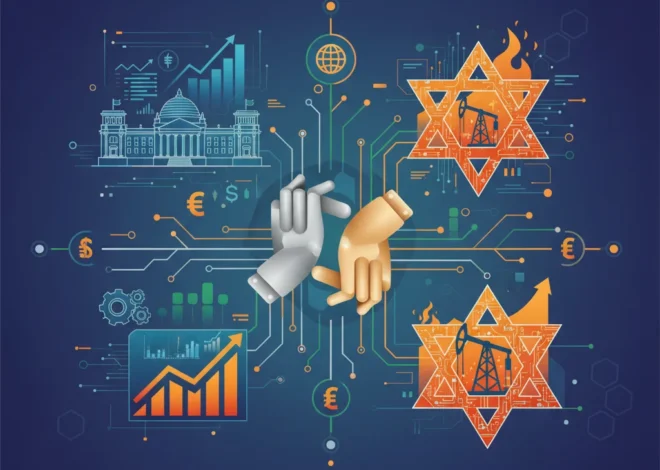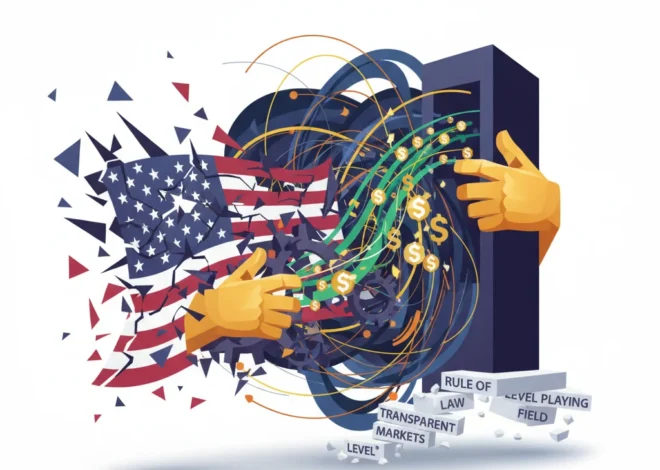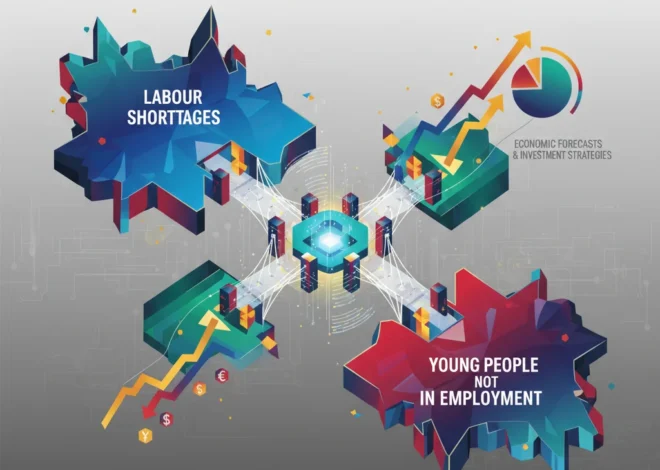
The Nuclear Shadow: How Cold War Deterrence Still Underpins the Global Economy
In the world of finance and investing, we obsess over quarterly earnings, interest rate hikes, and the latest fintech innovations. We build complex models to predict stock market movements and analyze the health of the global economy. Yet, beneath all this intricate analysis lies a stark, often-unspoken foundation: a 75-year-old military doctrine known as the “balance of terror.” The concept of mutually assured destruction, a relic of the Cold War, has paradoxically created the stability necessary for global capitalism to thrive. But what happens when that foundation begins to crack?
The recent conflict in Ukraine has thrust this uncomfortable reality back into the spotlight. The nuclear sabre-rattling by Russia has forced business leaders and investors to confront a tail risk so extreme it’s often dismissed. To understand the profound implications for our modern financial systems, we must look back at the history that shaped these rules of engagement. A recent discussion between the Financial Times’ Gideon Rachman and acclaimed historian Serhii Plokhy, author of Nuclear Folly, offers a crucial lens through which to analyze our current predicament.
The Cuban Missile Crisis: Forging the Rules of a Terrifying Game
The modern global economic order was built in the shadow of the atomic bomb. While the post-WWII era saw the creation of institutions like the World Bank and the IMF, it was the terrifying logic of nuclear deterrence that prevented great power conflict. According to Serhii Plokhy, the 1962 Cuban Missile Crisis was the crucible in which the unwritten rules of this new world were forged. It was the moment humanity came closest to self-annihilation, and in doing so, learned how to step back from the brink.
Plokhy explains that before the crisis, the world’s two superpowers, the US and the USSR, were “learning how to live with the bomb.” The crisis, he argues, was the final, terrifying lesson. “The major lesson that was learned was that you can start a nuclear war, but you can’t win it,” Plokhy states in the interview (source). This realization led to the establishment of critical communication channels, like the Moscow-Washington hotline, and a mutual understanding that direct military confrontation was off the table. This fragile stability, the “balance of terror,” became the bedrock upon which decades of globalization, international trade, and interconnected financial markets were built. Investors could pour capital across borders, and businesses could build global supply chains, all under the implicit assumption that a world-ending war was unthinkable.
The current situation in Ukraine represents the most significant challenge to this established order since 1962. Russia’s invasion of a non-nuclear state, backed by explicit nuclear threats, is a deliberate attempt to rewrite these rules. It leverages the fear of nuclear escalation to pursue conventional military goals, a dangerous gambit that puts the entire global system at risk.
The Peril of Prosperity: When Economic Blueprints Ignite Geopolitical Firestorms
Ukraine vs. Cuba: A Tale of Two Crises
While comparisons to the Cuban Missile Crisis are common, Plokhy highlights crucial differences that make our current situation uniquely perilous. We’ve synthesized these points into a comparative analysis to clarify the evolving nature of nuclear risk.
| Factor | Cuban Missile Crisis (1962) | Ukraine Conflict (Present) |
|---|---|---|
| Nature of Conflict | A direct superpower standoff over missile placement. The core conflict was between nuclear powers. | A nuclear power (Russia) invading a non-nuclear power (Ukraine), using nuclear threats to deter outside intervention. |
| Leadership & Rationale | Leaders (Kennedy, Khrushchev) were seen as rational actors, ultimately seeking to avoid mutual destruction. | Concerns about the unpredictability and historical grievances driving the decision-making of Russia’s leadership. |
| Stakes | Preventing the placement of Soviet missiles in Cuba and avoiding a direct nuclear exchange. | Russia’s perceived existential goals tied to its sphere of influence and Ukraine’s national survival. |
| Global Context | A bipolar world with two dominant, opposing ideological blocs. | A multipolar world with complex economic interdependencies, making the fallout of a conflict far more widespread. |
The key takeaway from this comparison is the shift from a direct, symmetrical confrontation to an asymmetrical one. Russia is not threatening the US with a first strike over an issue like Cuba; it is using its nuclear arsenal as a shield to wage a conventional war. This changes the calculus of deterrence and introduces a new, more volatile chapter in nuclear history. Plokhy chillingly notes that while the probability of a full-scale nuclear exchange may be lower than in 1962, the overall likelihood of any nuclear weapon being used is “probably higher today” due to this new dynamic.
The Economic Shockwaves of a Broken Taboo
The financial consequences of this new era of nuclear brinkmanship extend far beyond defense stocks and energy prices. The mere threat of nuclear use injects a level of volatility and uncertainty that can paralyze economic activity.
Consider the immediate impacts:
- Market Paralysis: A credible nuclear threat could trigger a massive flight to safety, causing stock markets to plummet and credit markets to freeze. The intricate system of global trading and finance would grind to a halt as counterparty risk becomes infinite.
- Supply Chain Collapse: The interconnectedness that defines our modern economy would become its greatest vulnerability. A limited nuclear event in a region like Ukraine would have cascading effects on global food supplies, energy transit, and manufacturing, leading to runaway inflation and shortages.
- Currency and Banking Crisis: In such a scenario, trust in fiat currencies would evaporate. We could see a desperate scramble for hard assets, potentially creating unprecedented volatility in commodities and even digital assets like those managed on a blockchain. The global banking system, built on trust and stability, would face an existential crisis.
This is no longer a theoretical exercise for Cold War historians. It is a tangible risk that must be factored into modern economic and investment strategy. The stability premium that the global economy has enjoyed for half a century is eroding. As Plokhy suggests, the end of the Cold War led to a sense of complacency, a belief that we had “somehow left the nuclear age behind us” (source). This illusion has been shattered.
Geopolitical Tremors: What US Military Threats in Venezuela Mean for Global Markets
Navigating the Future: Deterrence in a Multipolar World
The challenge ahead is to re-establish a stable deterrent in a world that is far more complex than the bipolar era of the Cold War. With the rise of other nuclear powers and the proliferation of advanced military technology, the old rules may no longer apply. For business and finance leaders, this means moving beyond quarterly reports and incorporating high-level geopolitical analysis into their core strategy.
Understanding the history of the “balance of terror” is no longer an academic pursuit; it is a prerequisite for effective risk management. The assumption of a stable, predictable international order can no longer be taken for granted. The invisible architecture that has supported decades of economic growth is under strain, and its future is uncertain. Companies and investors must now ask themselves difficult questions: How resilient are our supply chains to a major geopolitical shock? How do we hedge against risks that are seemingly unquantifiable? What is the true cost of global instability?
The Trillion-Dollar Question: Is High Public spending the Real Threat to Our Economy?
The conversation between Rachman and Plokhy serves as a stark reminder that history is not a distant country. The ghosts of the Cold War still haunt our hyper-modern, technologically advanced world. The nuclear shadow, which once spurred humanity to build guardrails against its own destruction, is lengthening once more. For those of us navigating the global economy, ignoring it is a luxury we can no longer afford.


